#Hawaii Pacific University
Explore tagged Tumblr posts
Text

Illustration by João Fazenda
The Burning of Maui
The governor called the fires Hawaii’s “largest natural disaster” ever. They would more accurately be labelled an “unnatural disaster.”
— By Elizabeth Kolbert | August 20, 2023
The ‘alalā, or Hawaiian crow, is a remarkably clever bird. ‘Alalā fashion tools out of sticks, which they use, a bit like skewers, to get at hard-to-reach food. The birds were once abundant, but by the late nineteen-nineties their population had dropped so low that they were facing extinction. Since 2003, all the world’s remaining ‘alalā have been confined to aviaries. In a last-ditch effort to preserve the species, the San Diego Zoo Wildlife Alliance has been breeding the crows in captivity. The alliance keeps about a third of the birds—some forty ‘alalā—at a facility outside the town of Volcano, on the Big Island, and the rest outside the town of Makawao, on Maui. Earlier this month, the Maui population was very nearly wiped out. On the morning of August 8th, flames came within a few hundred feet of the birds’ home and would probably have engulfed it were it not for an enterprising alliance employee, one of her neighbors, and a garden hose.
According to the U.S. Fish and Wildlife Service, “many factors” contributed to the ‘alalā’s decline, including habitat destruction, invasive species, and the effects of agriculture on the landscape. Owing to these developments, Hawaii’s native fauna in general is in crisis; the state has earned an unfortunate title as “the extinction capital of the world.” Of the nearly hundred and fifty bird species that used to be found in Hawaii and nowhere else, two-thirds are gone. Among the islands’ distinctive native snails, the losses have been even more catastrophic.
Last week, as the death toll from the fires in West Maui continued to mount—late on Friday, the number stood at a hundred and eleven—it became clear that the same “factors” that have decimated Hawaii’s wildlife also contributed to the deadliness of the blazes. Roughly a thousand people have been reported as still missing, and some two thousand homes have been destroyed or damaged. The worst-hit locality, the town of Lahaina, which lies in ruins, was built on what was once a wetland. Starting in the mid-nineteenth century, much of the vegetation surrounding the town was cleared to make way for sugar plantations. Then, when these went out of business, in the late twentieth century, the formerly cultivated acres were taken over by introduced grasses. In contrast to Hawaii’s native plants, the imported grasses have evolved to reseed after fires and, in dry times, they become highly flammable.
“The lands around Lahaina were all sugarcane from the eighteen-sixties to the late nineteen-nineties,” Clay Trauernicht, a specialist in fire ecology at the University of Hawaii at Mānoa, told the Guardian. “Nothing’s been done since then—hence the problem with invasive grasses and fire risk.”
Also contributing to the devastation was climate change. Since the nineteen-fifties, average temperatures in Hawaii have risen by about two degrees, and there has been a sharp uptick in warming in just the past decade. This has made the state more fire-prone and, at the same time, it has fostered the spread of the sorts of plants that provide wildfires with fuel. Hotter summers help invasive shrubs and grasses “outgrow our native tree species,” the state’s official Climate Change Portal notes.
As Hawaii has warmed, it has also dried out. According, again, to the Climate Change Portal, “rainfall and streamflow have declined significantly over the past 30 years.” In the weeks leading up to the fires in West Maui, parts of the region were classified as suffering from “severe drought.” Meanwhile, climate change is shifting storm tracks in the Pacific farther north. Hurricane Dora, which made history as the longest-lasting Category 4 hurricane on record in the Pacific, passed to the south of Maui and helped produce the gusts that spread the Lahaina fire at a speed that’s been estimated to be a mile per minute.
After visiting the wreckage of Lahaina, Hawaii’s governor, Josh Green, called the Maui fires the “largest natural disaster Hawaii has ever experienced.” In fact, the fires would more accurately be labelled an “unnatural disaster.” As David Beilman, a professor of geography and environment at the University of Hawaii at Manoa, recently pointed out, for most of Hawaii’s history fire simply wasn’t part of the islands’ ecology. “This Maui situation is an Anthropocene phenomenon,” he told USA Today.
A great many more unnatural disasters lie ahead. Last month was, by a large margin, the hottest July on record, and 2023 seems likely to become the warmest year on record. Two days after Lahaina burst into flames, the National Oceanic and Atmospheric Administration issued a revised forecast for the current Atlantic hurricane season, which runs through the end of November. The agency had been predicting a “near-normal” season, with between five and nine hurricanes. But, because of record sea-surface temperatures this summer—last month a buoy in Manatee Bay, south of Miami, registered 101.1 degrees, a reading that, as the Washington Post put it, is “more typical of a hot tub than ocean water”—noaa is now projecting that the season will be “above normal,” with up to eleven hurricanes. Rising sea levels and the loss of coastal wetlands mean that any hurricanes that make landfall will be that much more destructive.
A few days after noaa revised its forecast, officials ordered the evacuation of Yellowknife, the capital of Canada’s Northwest Territories. A wildfire burning about ten miles away would, they feared, grow to consume the city. The Canadian Broadcasting Corporation called the evacuation order “extraordinary.” This summer has been Canada’s worst wildfire season on record, and, at times, the smoke has spread all the way to Europe. There are currently something like a thousand active fires in the country.
Two days after the Yellowknife evacuation was ordered, another Pacific hurricane—Hilary—intensified into a Category 4 storm. Hilary was being drawn north by a “heat dome” of high pressure over the central Plains, which was expected to bring record temperatures to parts of the Midwest. The storm’s unusual track put some twenty-six million people in four states—California, Utah, Nevada, and Arizona—under flash-flood watches.
How well humanity will fare on the new planet it is busy creating is an open question. Homo sapiens is a remarkably clever species. So, too, was the ‘alalā. ♦
— Published in the Print Edition of the August 28, 2023, New Yorker Issue, with the Headline “Fire Alarm.”
#Maui#Natural Disaster | Un-natural Disaster#Elizabeth Kolbert#The New Yorker#Alalā | Hawaiian Crow#San Diego Zoo Wildlife Alliance#U.S. Fish and Wildlife Service#Lahaina#Clay Trauernicht | University of Hawaii at Mānoa#Climate Change Portal#Hawaii’s Governor | Josh Green#David Beilman | University of Hawaii at Manoa#Anthropocene Phenomenon#National Oceanic and Atmospheric Administration#Atlantic Hurricane 🌀#Manatee Bay | South of Miami#Yellowknife | Canada’s 🇨🇦 Northwest Territories#Europe#Pacific Hurricane 🌀#Mid-West | California | Utah | Nevada | Arizona#Fire 🔥 Alarm 🚨
3 notes
·
View notes
Text
His route took him across the Siberian wastes and the Pacific Ocean above the Hawaiian islands, past the tip of South America and into the South Atlantic, where he was greeted by a second sunrise before a 42-second de-orbit burn over the Angolan coast slowed Vostok 1 into a parabolic orbit and an 8-g deceleration inside Earth's thickening atmosphere.

"Human Universe" - Professor Brian Cox and Andrew Cohen
#book quotes#human universe#brian cox#andrew cohen#nonfiction#vostok 1#yuri gagarin#space exploration#siberia#hawaii#pacific ocean#south america#atlantic ocean#south atlantic#angola#orbit#parabola#cosmonaut
3 notes
·
View notes
Text
Inaugural issue of the Journal of Polynesian Archaeology and Research
Readers may be interested in this newly-launched journal in an adjacent region, the Journal of Polynesian Archaeology and Research which is Open Access.
Readers may be interested in this newly-launched journal in an adjacent region, the Journal of Polynesian Archaeology and Research which is Open Access. Welcome to the inaugural issue of the Journal of Polynesian Archaeology and Research (JPAR). We have been working with colleagues at the University of Hawai‘i Press for the past two years to establish and launch this open-access journal that…

View On WordPress
#Journal of Polynesian Archaeology and Research#Pacific Ocean#Polynesia (culture)#University of Hawaii
0 notes
Video
tumblr
Marshall Islands Top University IQ Test #iqtest #freeiqtest #quiz #quizz...
#youtube#University of the South Pacific Marshall Islands College of the Marshall Islands University of Hawaii Marshall Islands College Center Palau
0 notes
Text
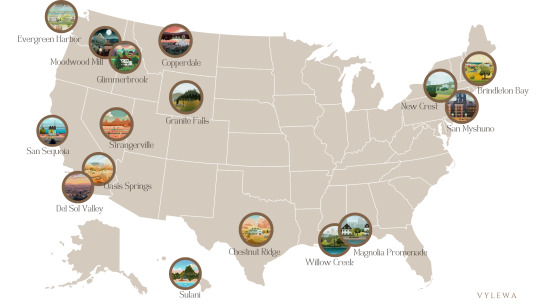

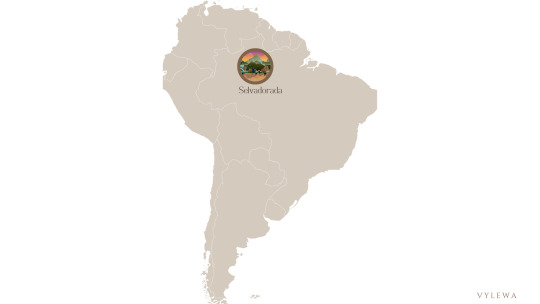
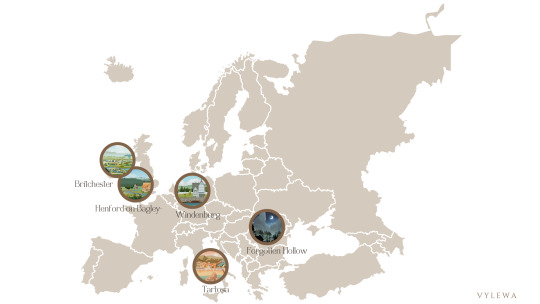
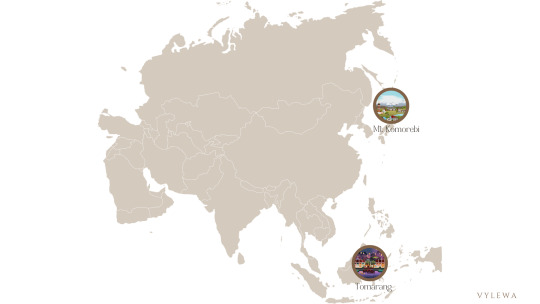
Over the last few weeks, I have been spending my time working on my save file because I'm gearing up to start a Let's Play series on Youtube. As I've been building the stories for the characters in my save file, I started thinking about the Sims universe as a whole and how I want my Sims to travel between worlds. It got me thinking that some worlds feel like they're just a short 4-hour car ride away, while others feel like you'd need a plane to get there.
So, I decided to map out my sims universe. I got a lot of inspiration from different Reddit posts as well as the EA descriptions of each world. This has been so helpful for me as I plan out the buildings I want to place in each world. It has been so helpful with finding inspiration for creating builds. I hope you can find this helpful too.
I'm really happy about my Sims universe turned out. I'd love to hear what you think about it! Are there any worlds you disagree with me on? Also, when are we getting an African world, EA?
North America
New Crest reminds me of suburban New York, mostly because you can still the city skyline from there.
Brindleton Bay reminds me so much of New England.
San Myshuno is quite obviously New York.
Willow Creek gives me a New Orleans vibe.
Magnolia Promenade is somewhere in the south because of the name (magnolias grow in the mostly in Southern United States - Mississippi, Louisiana, Alabama, Florida, Georgia, and South Carolina). I placed it close to Willow Creek for story telling purposes.
Chestnut Ridge gives me a strong Texas vibe.
Del Sol Valley is undoubtedly Los Angeles.
Oasis Springs I think of as Palm Springs with the desert and all, also the Langraabs live there.
San Sequoia I think of as San Francisco mainly because of the Golden Gate Bridge and Bay area, I have all my tech gurus living up there.
Strangerville is straight up Area 51 with all the weird stuff going on there.
Granite Falls gives me a National Park vibe, so I chose my favorite, Yellowstone which is mostly in Wyoming.
Copperdale seems to be in the rocky mountains, I placed it in Montana because of the old mining town description. Butte, Montana used to be a huge mining town.
Moonwood Mill reminds so much of the thick woods in the Pacific West somewhere Washington or Oregon.
Glimmerbrook I imagine is close to Moonwood Mill and the witches and the werewolves are always beefing.
Evergreen Harbor gives me a strong Pacific West port city like Vancouver (I know Vancouver is not in the US, but you get the drift).
Sulani reminds me so much of Hawaii, the beautiful beaches, volcanoes, and mountains and the culture portrayed by Sulanians.
Ciduad Enamorada reminds me so much of Mexico City, Mexico.
South America
Selvadorara gives a strong Amazonian vibe so I placed it in Brazil.
Europe
Britchester because of Britchester uinversity reminds me of Universtiy of Oxford, or University of Cambridge so I placed it in the UK.
Henford-on-Bagley gives off a strong English country vibe so I placed it South Central England.
Windenburg gives off a German vibe because of the style of buildings placed in the world.
Forgotten Hollow I think of as somewhere in Transylvania so I placed it in Romania.
Tartosa is undoubtedly mediterranean so I placed it in Italy.
Asia
Tomarang with the tuk tuks and the tiger sanctuary reminds me of Indonesia.
Mt. Komorebi, my absolute favorte world, is Japan. I can't wait to visit someday.
P.S. Batuu is not included in my sims universe because it is in space, I don't anticipate my sims ever traveling there, but if I ever feel otherwise, I will include it in here.
497 notes
·
View notes
Note
Do you have any lobsters? My friend loves lobsters
DO I HAVE ANY LOBSTERS?!?!
I HAVE SO MANY LOBSTERS...
Let me show you... Here, let's have a look at lobsters from 3 different taxonomic groups...
SPINY LOBSTERS (family Palinuridae)
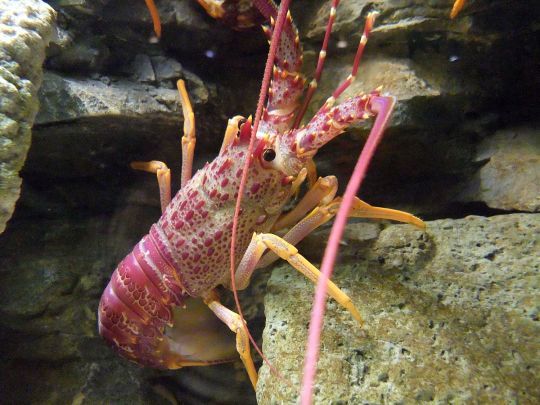
Southern Rock (Spiny) Lobster (Jasus edwardsii), family Palinuridae, found in coastal areas around Australia and New Zealand
photograph by Stemonitis
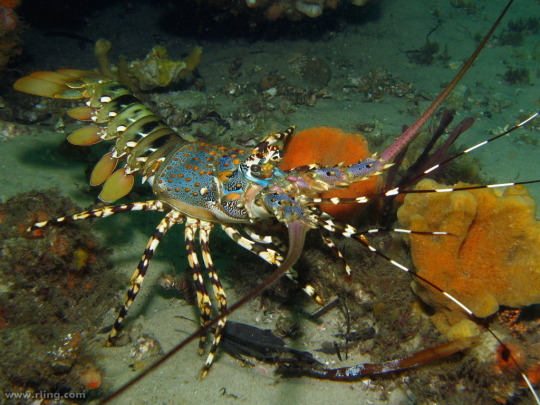
Ornate Rock Lobster (Panulirus ornatus), family Palinuridae, Fly Point, Port Stephens, NSW, Australia
photograph by Richard Ling
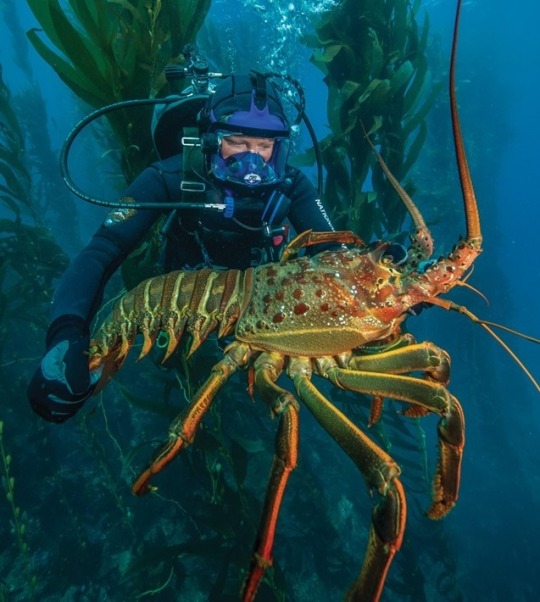
California Spiny Lobster (Panulirus interruptus), family Palinuridae, off the coast of California, USA
photograph by Brett Seymour | NPS
REEF LOBSTERS (family Enoplometopidae)
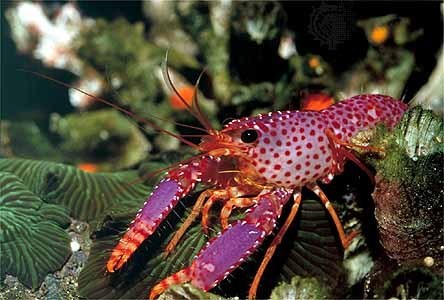
Violet-spotted Reef Lobster (Enoplometopus debelius), family Enoplometopidae, found around the Pacific Ocean
photograph by reef-guardian.com

Atlantic Reef Lobster (Enoplometopus antillensis), family Enoplometopidae, found in warmer parts of the Atlantic Ocean
photograph by Fernando Herranz Martín
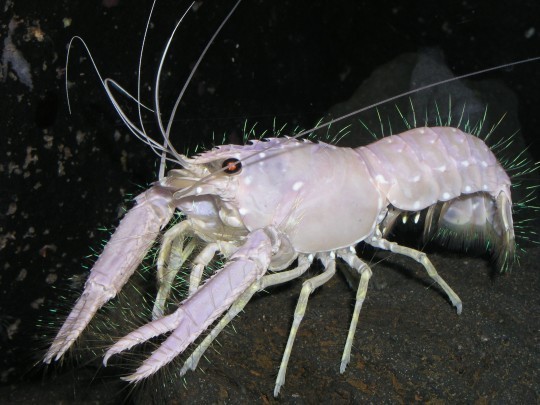
Hawaiian Red Reef Lobster (Enoplometopus occidentalis), family Enoplometopidae, Hawaii
This species is normally red, but this individual has just molted.
photograph by Drew R. Smith
TRUE or TYPICAL LOBSTERS (family Nephropidae)

European Lobster (Homarus gammarus), family Nephropidae, found in the eastern Atlantic
photograph by H. Zell
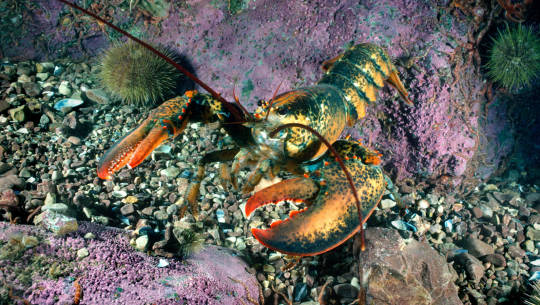
American Lobster (Homarus americanus), family Nephropidae, found off the Atlantic coast of the NE U.S. and eastern Canada
photograph via: University of Maine
#lobster#decapod#crustacean#spiny lobster#reef lobster#ocean#homarus#nephropidae#Enoplometopus#Enoplometopus occidentalis)#family Enoplometopidae#Panulirus#palinuridae#jasus#aniamls#nature
454 notes
·
View notes
Text
"The U.S. government is entering a new era of collaboration with Native American and Alaska Native leaders in managing public lands and other resources, with top federal officials saying that incorporating more Indigenous knowledge into decision-making can help spur conservation and combat climate change.
Federal emergency managers on Thursday also announced updates to recovery policies to aid tribal communities in the repair or rebuilding of traditional homes or ceremonial buildings after a series of wildfires, floods and other disasters around the country.
With hundreds of tribal leaders gathering in Washington this week for an annual summit, the Biden administration is celebrating nearly 200 new agreements that are designed to boost federal cooperation with tribes nationwide.
The agreements cover everything from fishery restoration projects in Alaska and the Pacific Northwest to management of new national monuments in the Southwestern U.S., seed collection work in Montana and plant restoration in the Great Smoky Mountains.
“The United States manages hundreds of millions of acres of what we call federal public lands. Why wouldn’t we want added capacity, added expertise, millennia of knowledge and understanding of how to manage those lands?” U.S. Interior Assistant Secretary Bryan Newland said during a panel discussion.
The new co-management and co-stewardship agreements announced this week mark a tenfold increase over what had been inked just a year earlier, and officials said more are in the pipeline.
Newland, a citizen of the Bay Mills Indian Community in northern Michigan, said each agreement is unique. He said each arrangement is tailored to a tribe’s needs and capacity for helping to manage public lands — and at the very least assures their presence at the table when decisions are made.
The federal government is not looking to dictate to tribal leaders what a partnership should look like, he said...
The U.S. government controls more than a quarter of the land in the United States, with much of that encompassing the ancestral homelands of federally recognized tribes...
Tribes and advocacy groups have been pushing for arrangements that go beyond the consultation requirements mandated by federal law.
Researchers at the University of Washington and legal experts with the Native American Rights Fund have put together a new clearinghouse on the topic. They point out that public lands now central to the country’s national heritage originated from the dispossession and displacement of Indigenous people and that co-management could present on opportunity for the U.S. to reckon with that complicated legacy...
In an attempt to address complaints about chronic underfunding across Indian Country, President Joe Biden on Wednesday signed an executive order on the first day of the summit that will make it easier for tribes to find and access grants.
Deanne Criswell, administrator of the Federal Emergency Management Agency, told tribal leaders Thursday that her agency [FEMA] began work this year to upgrade its disaster guidance particularly in response to tribal needs.
The Indigenous people of Hawaii have increasingly been under siege from disasters, most recently a devastating fire that killed dozens of people and leveled an entire town. Just last month, another blaze scorched a stretch of irreplaceable rainforest on Oahu.
Tribes in California and Oregon also were forced to seek disaster declarations earlier this year after severe storms resulted in flooding and mudslides...
Criswell said the new guidance includes a pathway for Native American, Alaska Native and Hawaiian communities to request presidential disaster declarations, providing them with access to emergency federal relief funding. [Note: This alone is potentially a huge deal. A presidential disaster declaration unlocks literally millions of dollars in federal aid and does a lot to speed up the response.]
The agency also is now accepting tribal self-certified damage assessments and cost estimates for restoring ceremonial buildings or traditional homes, while not requiring site inspections, maps or other details that might compromise culturally sensitive data."
-via AP, December 7, 2023
#united states#us politics#natural disasters#disaster relief#public lands#land back#indigenous#native american#first nations#indigineous people#sovereignty#president biden#biden administration#hope#good news#land management
595 notes
·
View notes
Text
a/n: Something something Percy and vacation, because we all know the poor guy deserves a break. For some reason, I have this entire short series of Percy and his partner in Hawaii floating around in my head. Surfboards, shaved ice, and a lot of sunburn jokes (because you know Nico would never let this go). Honestly, it’s the idea of him being both so in his element with the water and so hilariously out of his depth when it comes to the whole “vacation” thing.
daughter of hades! reader
For as much as you were your father's daughter, the sun seemed to give you the perfect tan—unlike any other child of Hades. (RIP Nico, your lobster-colored skin will never be forgotten.) At least it usually did. This time, you were pretty sure you'd leave the water with a good sunburn, judging by the relentless warmth soaking into your skin. But you couldn't bring yourself to leave your surfboard. Not with the way your sunglasses fit snuggly on your nose, nor when the waves were so perfect, lapping against your legs and carrying you with a kind of ease you'd been craving for weeks.
This whole trip was a much-needed vacation after weeks of college exams and late-night stress eating. The only thing keeping you sane during those grueling study sessions was the promise of seeing Percy again. Long-distance relationships were complicated as hell—ironic, given your family ties—but somehow, the two of you made it work. Even going from opposite ends of the world to just two states away hadn't magically solved the struggle of missing him every single day. But him attending New Rome University did make things easier when it came to shadow travel.
So, when your semester ended, you made it your mission to convince your boyfriend that a trip to Hawaii would solve all your problems. It was the ultimate win-win situation. You got a week on the beach, Percy got to try out his water skills in style, and both of your families got a much-needed break. Plus, it wasn’t every day that the son of Poseidon got to show off in the Pacific. Plus, this whole trip was going on Daddy's credit card anyways.
The sound of a familiar laugh cut through the rhythmic crash of waves, and you glanced toward the shoreline. Percy stood there, grinning ear to ear, holding what looked like a painfully large plate of shaved ice. He waved it in the air as if to say, Hurry up, or I’m eating this all myself. Typical.
"You're lucky I like you," you muttered to yourself with a grin, lying flat on the board and paddling toward the beach. The salty spray stung your eyes, but it was worth it. Every second you spent in Hawaii with Percy felt like another little reminder of why you'd fallen for him in the first place. His effortless charm. The way he somehow always made you laugh, even on your worst days. And, of course, how he absolutely refused to stop teasing you for being a "walking contradiction."
"You're Hades' kid," he'd said when you first arrived, eyes sparkling as he watched you grab a lei of bright yellow plumerias. "Aren't you supposed to, like, hate the sun or something?"
You’d shoved the lei into his face. "We don't all brood like Nico, you know."
The water rushed around your ankles as you pushed the board closer to shore, and Percy handed you the shaved ice with a cheeky smile, already plotting something—you could tell by the glint in his sea-green eyes. Sure enough, as soon as he sat down, he used his powers to send a gentle wave rolling up behind you, pushing the board—and both of you—back into the ocean. "Took you long enough. I thought I’d have to send a search party."
"Oh, please." You rolled your eyes, trying to steady yourself while digging your spoon into the colorful mound. "I’m not the one who spent half an hour arguing with the guy about blue raspberry being superior to pineapple."
"It is superior," Percy argued, unrepentant, pressing his legs against either side of yours. "I’m just spreading the truth."
"Spreading lies, you mean," you shot back, handing him the bowl, then, with a content sigh, you lay back against the board, letting the gentle rocking of the ocean drift your mind away.
How the two of you managed to fit so perfectly on the surfboard was a mystery, especially considering that Percy was anything but small. But somehow, it worked. Maybe that was just...you and him. Always finding a way to make things fit, no matter how chaotic or improbable it seemed.
“We should do one of those couple massages the hotel offers,” Percy muttered, breaking the peaceful silence. You felt him lean forward against your legs, his voice a warm rumble as the waves continued to lap softly around you. “Mom and Paul got one this morning, and she said it was worth it.”
So that’s why Sally and Paul had left Estelle with you two earlier. Not that you minded. Estelle adored both of you, and you couldn’t say no to that little face. The memory of her tiny fingers tugging on yours that morning as she lay between you in bed brought a smile to your lips. She had giggled uncontrollably every time you’d snuggled closer, her bright laugh filling the room in a way that made your heart feel impossibly full.
“She’s the best, isn’t she?” Percy asked, as if reading your mind.
“Definitely,” you agreed, a fond smile curling your lips. “She didn’t even cry when I accidentally dropped her pacifier. Just gave me this little side-eye like, ‘Really? You’re supposed to be the responsible one.’”
Percy barked a laugh, the sound so genuine it made your chest ache in the best way. “Yeah, that’s my sister, all right. She’s already better at judging people than I am.”
“Low bar,” you teased, nudging his side lightly with your foot.
“Hey!” He grabbed your ankle in mock indignation, a grin tugging at the corner of his mouth. “You wound me.”
You couldn’t help but laugh, the sound blending with the soft crash of waves around you. Moments like this—peaceful, playful, with no looming monsters or world-ending crises, or college essay's due—were rare, and you wanted to soak in every second.
“So,” Percy said after a moment, letting go of your ankle and leaning back again, placing the bowl of already half eaten ice in the empty space under your legs. “Massages or no?”
You hummed in thought, pretending to deliberate even though you already knew the answer. “Fine. As long as this sunburn doesn't kill me tomorrow."
“Ah, yes, finally you will achieve that lobster burn like all children of Had—” Percy started to laugh, but you didn’t let him finish. With a quick shove of your leg, you pushed him off the surfboard, sending him tumbling into the water.
There was a startled yelp, followed by a loud splash, and then silence. For a moment, the waves lapped peacefully, as if the ocean itself was holding its breath.
Then, with a dramatic gasp, Percy resurfaced, water dripping from his soaked bangs as he propped himself up on the edge of the board. His nose was inches from yours, his sea-green eyes narrowed into an exaggerated pout. “Hey! What was that for?!”
“For daring to slander my superior tanning skills,”
Percy squinted at you, water glistening on his skin. “You know, I could just flip this board and end this little truce right now.”
“Percy, so help me, if you try—” Your words were cut off as he leaned forward, slotting his mouth against yours.
The kiss was warm and salty, the ocean’s spray clinging to both of you as his hand found your cheek. For a moment, the world stilled—the waves, the sky, the sun—all of it fading into the background as his lips moved with yours. All that mattered was Percy, his touch, the quiet certainty that he was yours, and you were his.
When he pulled back, his grin was back in full force, all smug and playful. “That’s what I thought,” he said.
You narrowed your eyes at him, trying to keep your expression serious, though the heat blooming in your cheeks probably gave you away. “You’re lucky you’re cute.”
“Lucky?” Percy quirked an eyebrow, sliding back onto the board with practiced ease. “Babe, I’m a catch.”
You groaned, pushing the shaved ice back into his hands. “And now I’m regretting everything.”
“Liar,” he teased, bumping his knee against yours. The two of you sat there, the surfboard rocking gently beneath you. You let out a long sigh, resting your head against Percy’s shoulder, your fingers idly trailing through the cool water beside the board. “You know,” you said after a beat, “I think this might be the longest we’ve gone without a sea monster showing up.”
“Don’t jinx it,” Percy warned, his voice light but carrying just enough seriousness to make you laugh. “The last thing I want is a giant crab ruining my shaved ice.”
“Or ruining our massage plans,” you added with a small grin. “You’re still treating me, by the way.”
“Treating you?” Percy shot you a faux-offended look. “I’m the one risking my life out here. You’re the one who almost drowned me.”
“You fell off,” you corrected, snickering as you felt his gaze on you. “I just… gave you a little nudge.”
“Yeah, sure,” he muttered, shaking his head, but the way his arm wrapped around your waist told you he wasn’t really upset.
The two of you drifted for a while longer, the sounds of laughter and waves filling the air. As the sun moved across the sky, Percy glanced at you, his eyes softening. “Thanks for this.”
“For what?” you asked, turning to meet his gaze.
“For... making everything better,” he admitted, his voice quieter now. “Even when stuff sucks, you somehow make it less sucky.”
You smiled, leaning into his warmth. “That’s what I’m here for.”
Percy grinned, pressing a kiss to the top of your head. “Well, good. Because I’m not letting you go.”
You smiled up at him. “You’re stuck with me, Seaweed Brain.”
“Wouldn’t have it any other way.”
#✨️by yours truly✨️#percy jackson x reader#percy jackson#pjo#percy jackson x y/n#bookish#percy jackson x you#percy jackson and the olympians#percy jackson series#drabble#vacation with percy would be fun
117 notes
·
View notes
Text
Timezones in One Piece World
I am back with a physics post! Well, more meteorology/geography post!
I was inspired to create a timezone map after reading the newest chapter of Doflamingo's Marine by @moonbaby26 where a timezone difference was mentioned, which was a great detail! I remember thinking about timezones in OP world but never got around to it but I did now. So it made me wonder just what timezone is Dressrosa (my fav island 🤗) in, what timezone are the other islands in?
SO!
I pulled a grid of irl timezones, simplified it, and put it over the One Piece World Map! (You can see some parts where I was like, no keep it simple, simplify it).
HERE IT IS!
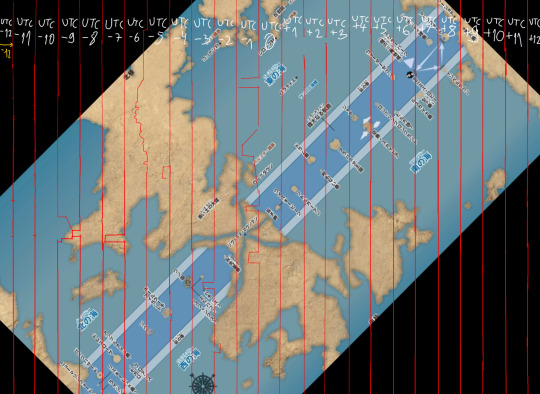
UTC is coordinated universal time, aka time in the center of the world. Anyway, here are the islands + locations and I'll put some ANs for some cus some are interesting.
Paradise:
Reverse Mountain [UTC -1]
Red Line Center [UTC -1]
Twin Cape [UTC 0] Greenwhich Mean Time,
📍Iceland
I find it PERFECT the exit from Reverse Mountain into Grand Line are the ones in the center of the One Piece World, not the Red Line Itself.
Cactus Island [UTC 0] Western European Time (WET)
📍irl ex: Reykyavik, Iceland
Little Garden [UTC +1] Central European Time (CET)
📍 Italy, Spain
Drum Island [UTC +2] Eastern European Summer Time (EEST)
Alabasta [UTC +3] irl ex:
📍
Jaya [UTC +4]
Skypiea [UTC +4]
Long Ring Rong Island [UTC +5]
Water 7 [UTC +6]
Amazon Lily [UTC +7]
Enies Lobby [UTC +6]
Florian Triangle [UTC +9] Japan Standard Time
Sabaody Archipelago [UTC +10]
Impel Down [UTC +8]
Marineford [UTC +9] Japan Standard Time (JST)
Holy Land of Mariejois [UTC +9] New Zealand Standard Time
Fishman Island [UTC +10]
New World
New Marineford [UTC -8] Baker Island Time (BIT)
Punk Hazard [UTC -8] Samoa Standard Time (SST)
Dressrosa [UTC -7] Pacific Daylight Time
📍 Los Angeles
It used to be in Hawaii, it fit so much, whyyyy 😭😭
Totto Land [UTC -5] Eastern Standard Time
📍irl ex: Florida, U.S.
Wano Country [UTC -4]
📍irl ex:
Uf, I think that's all the big locations. I recommend using just the UTC and then you go minus or plus just so you don't have to go converting everything. The One Piece world most likely just says "Universal Time + (number)" or sth.
So, for example, if it's 17:00 (5 pm) in Marineford (UTC +9) on a Monday, it will then be 1 am on Monday in Dressrosa.
17 - 9 (to get UTC 0) = 8 am Monday (UTC 0)
Then another -7 hours, you get Monday 1 am (UTC -7) in Dressrosa. So Dressrosa is 16 HOURS behind Original Marineford.
Interesting how Doflamingo settled in Dressrosa, which is the entire 22 hours behind Holy Land by time, symbolising how his family abandoned the privileges of Celestial Dragons. Nice.
Also, for the Blues, regarding seasons:
North Blue & East Blue = North Hemisphere such as Europe & U.S. (winter months - December, January, February)
West Blue & South Blue - South Hemisphere (like Australia & New Zealand) so the winter months are June, July, August.
The seasons are interchangable in the Grand Line depending on the islands!
Taglist: @fanaticsnail
#one piece#one piece fandom#one piece meta#physics of one piece#put in the tags which island you live on#i'm in little garden 😭😭
87 notes
·
View notes
Text
Rescue crews are still searching Lahaina, Hawaii, for survivors of the catastrophic wildfire that obliterated the town last week on the island of Maui. It’s the deadliest blaze in modern American history, with 99 people confirmed dead, surpassing the 85 that perished in 2018’s Camp Fire in Paradise, California. Crews have only searched a quarter of Lahaina, so the death toll is expected to rise higher still. At least 2,200 structures have been destroyed.
During the 19th century, it made a kind of terrible sense that blazes like the Great Chicago Fire of 1871 could burn swaths of a city almost totally unchecked. Fire and building codes were lacking. So were firefighting forces and robust water infrastructure. By the early 20th century, those things had been upgraded. Cities and towns were safer—for a while. But now expansive urban fires have returned, and they are burning with startling frequency and intensity.
“We thought urban fires had gone away, that San Francisco in 1906 was the last. And now they’ve come back,” says fire historian Stephen Pyne. “It’s like watching polio come back. We fixed this. But you have to maintain the hygiene—you have to keep up the vaccinations.”
And the Lahaina fire shows that they can burn in places where nobody expects a catastrophic wildfire: a modern town on a tropical island in the middle of the Pacific, whose ecosystems only rarely saw wildfire in prehistory.
It’s not the only recent example of fires ravaging surprising places. In 2021, a freak wildfire ignited in late December—way outside of typical fire season—in Boulder, Colorado, burning more than 1,000 buildings. In 2017, the Tubbs Fire ripped through Santa Rosa, California, and its surrounding communities, destroying 5,600 structures and killing 22 people. “Those aren’t fire areas—they’re just the burbs,” says Thomas Cova, who studies wildfire evacuations at the University of Utah. “They’re modern streets, modern sidewalks, manicured lawns. It’s really become, in this changing climate, much more difficult to map where fires are going to occur and what time of year and how bad they might burn.”
On Maui, as with wildfires all over the world, there isn’t just one factor contributing to the blaze. Overall, climate change is making wildfires worse: A warmer atmosphere can absorb more moisture from the landscape. Climate change is also making droughts more frequent, longer, and more severe, so there’s less moisture to wet the landscape in the first place.
Add high winds—gusts of up to 80 miles per hour drove the flames a mile a minute across Lahaina—and all it takes is a single spark to ignite a fast-moving blaze. “There’s no firefighting capabilities for structure-to-structure urban fire in winds like that,” says Cova. “Once one structure catches on fire, if the wind’s blowing like that, it becomes like a blowtorch against the neighboring home.”
These winds across Maui were dry as well, helping to suck the remaining moisture out of vegetation to turn it into fuel. That fuel seems to have been invasive grasses that European colonizers brought when they established plantations. When rains are plentiful, these plants grow like mad, then easily dry out once the rain stops.
“Those fire-prone invasive species fill in any gaps anywhere else—roadsides, in between communities, in between people’s homes, all over the place,” Elizabeth Pickett, co-executive director of the Hawaii Wildfire Management Organization, told WIRED last week. “At this point, 26 percent of our state is covered in these fire-prone grasses.”
Not only has much of Maui been in a drought, but it’s also at the height of its dry season, so these plants have turned to tinder. “Feral landscapes fuel fires,” says Pyne. “Hot, dry, and windy, with lots of fuel, is the formula for big fires. And that’s what you’ve got here.”
In Hawaii, as in places along the West Coast, more and more people have been moving into the danger zone: the wildland-urban interface, or WUI. This is where nature butts up against human settlements or even intermingles with them. That’s why Paradise burned so quickly and thoroughly, destroying 19,000 structures, as the fire sped through pine needles and other dry leaves piled up around town. In Maui, the invasive grass acts as an accelerant. “Virtually every community in Hawaii is on a wildland-urban interface,” Pickett continued. “So we’re just like a WUI state, because we have developments that are all adjacent to wildland areas or surrounded by wildland areas.”
We don’t have to discover the vaccine against wildfires in such an interface—it’s already known. Massive urban fires waned in the 20th century because of better building codes, and infrastructure is still important today. When high winds kick up, they jostle power lines and can spark fires. Electrical equipment malfunctions were the confirmed causes of the Camp and Tubbs fires, among other recent blazes. While officials are still investigating what ignited the wildfire that consumed Lahaina, there’s speculation that it was also electrical wires. While it’s expensive to bury power lines, such an investment could go a long way toward saving structures and human lives.
And in the modern day, another big factor is managing potential fuels: In places like California, that means clearing dead brush. In Hawaii, it’s those invasive grasses. Because humans are such an unpredictable X factor in sparking fires—with a wayward firework or cigarette—it’s paramount that when people make mistakes, there’s less fuel to burn.
Protecting cities from supercharged wildfires also requires fundamental social shifts. If a tropical town like Lahaina can burn, which other cities are also at risk—and totally unready for it? “Normally we think of preparing for events that are within an envelope of historical, prior events,” says Cova. “This is unprecedented for Lahaina. And so how do you even begin to talk about preparing for things that no one's ever seen, including the people that manage fires?”
One of the greatest risks of urban wildfires is that residents can get caught between fast-moving fires and the limitations of city infrastructure, like narrow, winding roads or a lack of evacuation routes. People died in their cars trying to get out of Paradise, and it appears the same happened in Lahaina. “We’ve known for a long time—even in hurricanes where you have way-advance warning—that evacuating cars sometimes is essential, but it’s really problematic, because you get congestion right away,” says Ann Bostrom, a risk communication researcher at the University of Washington. “Any city where you have a wildland-urban interface, and then you have any kind of complicated transportation, where you don’t have free egress, that’s problematic.”
Protecting other cities from Lahaina’s fate will require fighting a battle on multiple fronts: managing fuels to re-tame the feral landscape, minimizing ignitions with better electrical infrastructure, and rigorously communicating evacuation plans. “This is the kind of society we’ve created,” says Pyne. “And these are the kinds of fires that society will have to deal with.”
71 notes
·
View notes
Text
World: A Growing BRICS Bloc Shows U.S. Is Losing the Battle for the Global South
— BY Tom O'Connor | August 22, 2023
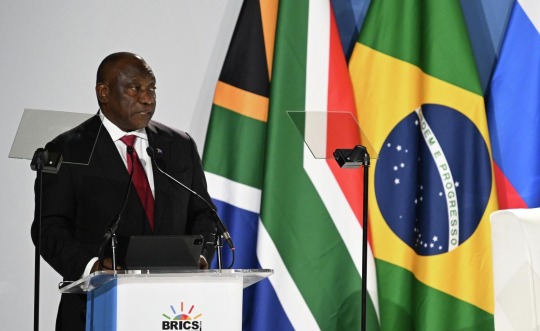
South African President Cyril Ramaphosa Delivers a Speech at the 15th BRICS Summit in Johannesburg, South Africa. © Sputnik/Grigory Sysoev/Go to the Mediabank
While Russian President Vladimir Putin's in-person absence due to international legal troubles looms over the BRICS conference attended by the leaders of fellow member states Brazil, India, China and South Africa, the growing interest in expanding the group to include additional countries from across the globe is likely to cement the bloc's future as a force in global geopolitics.
And with no seat at the table for the United States, the three-day summit that began Tuesday in Johannesburg demonstrates how Washington has struggled to project influence throughout the vast, developing Global South.
"The U.S. is trailing countries such as Russia, India and China in the Global South," Akhil Ramesh, a senior fellow at the Hawaii-based Pacific Forum, told Newsweek. "The Global South does not have this special solidarity it has with nations such as China and India. As victims of Western imperialism/colonialism and having faced similar challenges in reconstruction and development, they have a unique solidarity."
"The U.S. approach continues to be one where they use nations of the Global South as pawns in their future, larger cold/hot conflict with China or Russia," Ramesh added. "This understandably has not helped them win friends."
Such solidarity continues to extend to Putin, who has accelerated his country's outreach to developing nations, especially in Africa, in recent years.
Moscow's overtures have been met with ongoing interest, as evidenced by the recent Russia-Africa Summit in Saint Petersburg. The summit was attended by 16 African heads of state and representatives of 25 additional African countries, even as the West has accused Putin of war crimes, resulting in an International Criminal Court warrant, and of weaponizing food by bombing grain infrastructure and allowing a deal that safeguarded the continued export of Ukrainian grains via the Black Sea to collapse.
U.S. warnings about forging closer economic ties with China have been met with even stiffer resistance, as President Xi Jinping presses on with his ambitious Belt and Road Initiative extending across continents despite a slowing economy at home.
Ramesh argued that nations of the Global South simply "do not view Beijing and Moscow the same way the West does," and instead see new opportunities where traditional mechanisms have failed.
"So, when there was a group presenting an alternative to the Western-led world order/vision of the world," he added, "nations were quick to jump on the bandwagon."
Newsweek has reached out to the U.S. State Department for comment.
Still, obstacles to progress exist within a bloc whose core members already have little alignment in their broader geopolitical goals, while some, especially China and India, have active disputes between them. Such feuds have the potential to only grow as the coalition considers taking on new members, such as Iran and Saudi Arabia.
Others who have applied include Algeria 🇩🇿, Argentina 🇦🇷, Bahrain 🇧🇭, Bangladesh 🇧🇩, Belarus 🇧🇾, Bolivia 🇧🇴, Cuba 🇨🇺, Egypt 🇪🇬, Ethiopia 🇪🇹, Honduras 🇭🇳, Indonesia 🇮🇩, Kazakhstan 🇰🇿, Kuwait 🇰🇼, Morocco 🇲🇦, Nigeria 🇳🇬, the Palestinian National Authority 🇵🇸, Senegal 🇸🇳, Thailand 🇹🇭, the United Arab Emirates 🇦🇪, Venezuela 🇻🇪 and Vietnam 🇻🇳, according to the most recent count offered last week by South African Foreign Minister Naledi Pandor.

Brazil, Lula, arrives, BRICS, summit, South, Africa! Brazilian President Luiz Inácio Lula da Silva arrives in Johannesburg, South Africa ahead of the 15th BRICS summit. The leaders of 67 countries have been invited to join the forum led by Brazil, Russia, India, China and South Africa. Ricardo Stuckert/Presidency of The Federative Republic of Brazil
"Those who are there for the day-to-day negotiations, at least from the Brazilian government side, say it is already very hard to come to consensus when you have China, India and Russia at the table," Ana Elisa Saggioro Garcia, a professor at the Pontifical Catholic University of Rio de Janeiro's Institute of International Relations and general coordinator of the BRICS Policy Center, told Newsweek.
But "there's another side of the story," she said. That's the growing view, including from Brazilian President Luiz Inácio Lula da Silva, that "a strong BRICS" is necessary, and a "strong BRICS is also a big BRICS."
South Africa, the current chair, is the only nation to have been added to what began as an informal BRIC bloc, born out of a term coined by then-Goldman Sachs chief economist Jim O'Neill in 2001 to describe emerging economic powers. Russia led the initiative to bring Brazil, China and India together for the first summit in 2009, and South Africa was admitted the following year.
Initially, BRICS was focused on effecting reform within existing, primarily Western-led economic institutions, such as the International Monetary Fund (IMF), in the wake of the 2008 global financial crisis.
"The first common agenda that they had, despite their differences, was the reform of the international financial architecture," Garcia said. "So, international financial institutions, those grounded in the Bretton Woods Conference, in the post-war period, they do not represent the world anymore. Those huge economies don't have enough voice in those institutions, they need to be reformed. They need to reflect the new configuration of the world economic power."
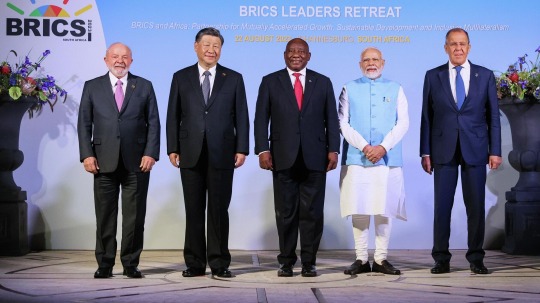
© Russian Ministry of Foreign Affairs/Go to the Mediabank
Gradually, the group became more focused on creating alternative mechanisms, most notably in the establishment in 2014 of the Shanghai-based New Development Bank, which today also counts Bangladesh, Egypt and the United Arab Emirates as members. With this transformation, Garcia explained, "the geopolitical character of BRICS started to be more important and more relevant than only the economic one."
China, in particular, she argued, "has been very clever and very strategic to use this opportunity to advance and to expand another coalition where China is predominant, where China doesn't have to deal with negotiations with Western powers."
But as evidenced by Brazil's enthusiasm for a more active role for BRICS and the growing list of prospective members, it's not all about Beijing.
"BRICS has become this pole of attraction of all countries now who've seen that they can have more power if they ally with a coalition such as BRICS to face measures that the West has been doing for years now," Garcia said, "and also to face these sorts of constraints and repression in terms of worldview and values."
Ryan Berg, director of the Center for Strategic and International Studies' (CSIS) Americas Program in Washington, D.C., also discussed how countries like Brazil were becoming more interested in the geopolitical nature of BRICS as an exercise in "active nonalignment."
"It can heighten the relevance of a country like Brazil, which is sometimes overlooked and feels overlooked and neglected," Berg said in response to Newsweek's question during a CSIS call held in the leadup to the BRICS summit.
"By pursuing this strategy," he explained, "you can basically make it a competition for the affection or for the attention of major world powers or leading world powers that would otherwise overlook Brazil's position on a particular issue."
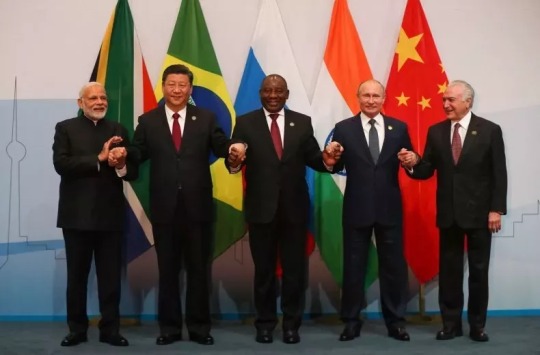
BRICS, Summit, South, Africa, 2018! (Left to right) Indian Prime Minister Narendra Modi, Chinese President Xi Jinping, South African President Cyril Ramaphosa, Russian President Vladimir Putin and then-Brazilian President Michel Temer pose for a group picture during the 10th BRICS summit on July 26, 2018 at the Sandton Convention Centre in Johannesburg, South Africa. South Africa's most populous city against hosts the BRICS summit in 2023, after each of the other four members hosted gatherings, three of which were virtual due to the COVID-19 pandemic. Mike Hutchings/POOL/AFP/Getty Images
Speaking on the same call, CSIS Africa Program director Mvemba Phezo Dizolele highlighted the importance of the host nation itself, saying BRICS membership "strengthened the position of South Africa among non-aligned countries" at a polarizing time in global geopolitics.
"Non-aligned countries have absolutely been at odds at least with Western countries, particularly ideologically because they do not want to align either with the Russians or with the United States and allies," Dizolele said.
A key goal for the summit's participants "will be discussing their disillusionment with U.S. leadership or at least the U.S.-led coalition around the world and how that world order is affecting adversely the countries of the Global South," he said, noting that "this will be a time when they will be seeking an alternative to that power."
The phenomenon of a competition among major powers to court the Global South was also observed by Mrityunjay Tripathi, a research fellow at the New Delhi-based Public Policy Research Center who previously served as part of India's delegation to the 2018 BRICS Youth Summit in South Africa.
"U.S. attempts to engage the Global South will only benefit the region, as the U.S. will act as a balancing power in the region dominated by China," Tripathi told Newsweek. "This competition will only benefit the developing economies and the multipolarity of the BRICS will ensure that region remains free and open to all."
Here, he said that "the presence of India adds credibility to BRICS and assures the West that India will act as a balancing power in the alliance that consists of Russia and China."
While New Delhi and Washington have strengthened ties in recent years, this does not mean total alignment in their positions. Tripathi argued that the trends apparent in the summit and context surrounding it show that Washington was on the backfoot in this competition over developing nations.

BRICS, Business, Forum, meets, in, South, Africa! (From left to right) Shaogang Zhang, vice chair of China's Council for the Promotion of International Trade, Onkar Singh Kanwar, chair of the BRICS Business Council's India chapter, Sergei Katyrin, chair of the BRICS Business Council's Russia chapter, José Serrador, chair of the BRICS Business Council's Brazil chapter, Busi Mabuza, chair of the BRICS Business Council's South Africa chapter, and Nozipho Tshabalala, CEO of the Conversation Strategist, attend a panel discussion during the 2023 BRICS Business Forum in Sandton, north of Johannesburg, South Africa, on August 22. Gianluigi Guercia/AFP/Getty Images
"The growing interest in BRICS does suggest that the U.S.' attempts to assert influence, particularly across the Global South, have not always produced desired results," Tripathi said. "The rise of BRICS is indicative of a shift in power dynamics from the traditionally Western-dominated world order to a more multipolar global scenario."
A key part of this shift identified by Tripathi was not only expansion, but the vision of "instituting a common currency," something that "further solidifies the group's commitment to long-term sustainable progress of the Global South."
"A common currency will not only boost intra-BRICS trade," he added," but also eliminate the high dollar conversion costs of international transactions."
Shen Shiwei, a journalist and analyst with a background in Chinese business dealings in Africa and the Middle East, argued that "the only thing that can beat the U.S. dollar is the dollar itself, driven by weaponization from Washington."
"The global trend of increasing the use of multiple currencies, instead of fully relying on U.S. dollars, is not a new idea," Shen told Newsweek. "Three decades ago, the euro was created in part because the majority of the EU wanted to move away from its deep reliance on the U.S. dollar."
"The dollar is still essential to global investments and trade," he added, "but the process of de-dollarization is accelerating, mainly because its weaponization has caused an erosion of confidence and alerted emerging economies to take actions to safeguard economic security."

People walk past a banner outside the venue for the 2023 BRICS Summit at the Sandton Convention Centre in Sandton, Johannesburg, on August 20. The BRICS countries, an acronym of the five members Brazil, Russia, India, China and South Africa, meet for three days for a summit in Johannesburg from August 22-24. Gianluigi Guercia/AFP/Getty Images
The U.S. dollar continues to command a significant lead against competitors, comprising some 59 percent of the world's foreign exchange reserves. The euro constitutes around 20 percent, with other currencies such as the Japanese yen, the United Kingdom's pound sterling and the Chinese renminbi in the single digits.
Still, a number of countries, particularly members of BRICS, have called for conducting bilateral trade in their own national currencies, and the idea of a common currency has been increasingly put forth. In April, Lula delivered an impassioned speech at the New Development Bank headquarters in which he railed against the notion that "all countries are forced to do their trade backed by the dollar."
The message has continued to gain traction among existing and prospective BRICS members.
"But that doesn't mean BRICS is anti-West," Shen said.

Russian President Vladimir Putin addresses BRICS summit in South Africa, August 22, 2023. © Sputnik/Grigory Sysoev
He argued that "the zero-sum game narrative developed in the West that the BRICS was created as competition to the G7 or the Global North is very misleading."
The G7, officially the Group of Seven, is a bloc consisting of the world's largest developed economies, including Canada, France, Germany, Italy, Japan, the United States and the U.K., with participation from the European Union as well. The G7 existed as the G8 until 2014, when it was expelled due to its role in the first major outbreak of conflict in Ukraine.
"All BRICS members have important political and economic cooperation with the G7 countries," Shen said. "More importantly, BRICS doesn't want to copy the Western hegemony in mentality and reality, which has brought too many problems to the Global South."
As opposed to the G7, "the BRICS mechanism has met the demands of the Global South, especially marginalized countries, to advance a collective agenda and push the building of a more inclusive, representative, just and fair global architecture," Shen argued.
"BRICS is not an exclusive club or small circle," he added, "but a big family of good partners."
#World 🌎#BRICS#Global South#United States 🇺🇸#Vladimir Putin#Russia 🇷🇺 | Brazil 🇧🇷 | India 🇮🇳 | China 🇨🇳 | South Africa 🇿🇦#Western Imperialism/Colonialism#Russia-Africa Summit | Saint Petersburg | Russia 🇷🇺#Beijing | Moscow#President Xi Jinping#Akhil Ramesh | Hawaii-based Pacific Forum#Ana Elisa Saggioro Garcia | Professor | Pontifical Catholic University of Rio de Janeiro#Shanghai | New Development Bank#Ryan Berg | Center For Strategic and International Studies' (CSIS) | Americas Program in Washington D.C.#CSIS Africa Program | Mvemba Phezo Dizolele#Disillusionment with U.S. | Leadership | U.S.-led World’s Coalition#Mrityunjay Tripathi | New Delhi | Public Policy Research Center#European Union 🇪🇺#G7 | G8#UK 🇬🇧 | Ukraine 🇺🇦#Japanese Yen#US 🇺🇸 Dollar | United Kingdom 🇬🇧 Pound Sterling#Shen Shiwei | China | Africa | Middle East
0 notes
Text
Wikipedia’s “Timeline of the Far Future” is one of my favorite webpages from the internet’s pre-slop era. A Londoner named Nick Webb created it on the morning of December 22, 2010. “Certain events in the future of the universe can be predicted with a comfortable level of accuracy,” he wrote at the top of the page. He then proposed a chronological list of 33 such events, beginning with the joining of Asia and Australia 40 million years from now. He noted that around this same time, Mars’s moon Phobos would complete its slow death spiral into the red planet’s surface. A community of 1,533 editors have since expanded the timeline to 160 events, including the heat death of the universe.
. . .
It reminds you that even the sturdiest-seeming features of our world are ephemeral, that in 1,100 years, Earth’s axis will point to a new North Star. In 250,000 years, an undersea volcano will pop up in the Pacific, adding an extra island to Hawaii. In the 1 million years that the Great Pyramid will take to erode, the sun will travel only about 1/200th of its orbit around the Milky Way, but in doing so, it will move into a new field of stars. Our current constellations will go all wobbly in the sky and then vanish.
8 notes
·
View notes
Video
youtube
Today is MBARI's 36th anniversary! To celebrate, we are sharing the story of MBARI's R/V Western Flyer.
David Packard believed that addressing the challenges of ocean exploration required a new type of research institute—one independent in spirit and collaborative by design. He founded MBARI on the core principle of scientists, engineers, and marine operations working in equal partnership to develop innovative marine technology. The research vessel Western Flyer embodied MBARI’s willingness to think big, be bold, and invest in long-term outcomes.

Constructed in 1996 with a unique twin hull design, the 117-foot SWATH vessel represented David Packard’s vision of developing innovative new platforms to better access and explore the ocean. SWATH, which stands for small waterplane area twin hull, means the ship is much more stable than more common monohulled vessels. This stability, combined with a specially constructed moonpool at the center of the vessel, made the ship an ideal platform to deploy, operate, and recover remotely operated vehicles (ROVs). For much of its time at MBARI the Western Flyer worked together with the Doc Ricketts, MBARI’s ROV capable of exploring to depths of 4,000 meters (2.5 miles).

The Western Flyer was instrumental to many of MBARI’s achievements: from studying ecosystems that could give insights into the impacts of climate change on the ocean, to identifying more than 200 new species—including a crown jelly, a harp sponge, and an incredible bone-eating worm named Osedax westernflyer in honor of the ship itself. During its quarter-century at MBARI, the Western Flyer also traveled to conduct research beyond its home base of Monterey Bay, venturing northwards to sites such as the Pacific Northwest, and southwards to places like Hawaii and Mexico’s Gulf of California.
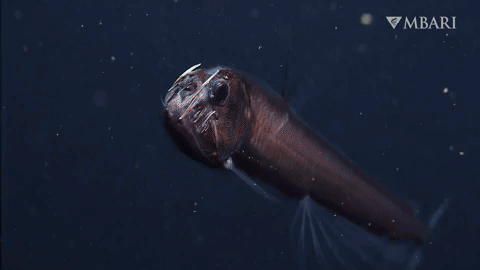
After 25 years of serving as MBARI’s flagship research vessel, the Western Flyer has begun a new chapter in education. MBARI granted the ship to the University of South Florida, which hosts the Florida Institute of Oceanography (FIO), for use as a sailing classroom. FIO will provide students with a unique mix of at-sea and on-shore training and mentoring to build ocean science, engineering, and maritime trade skills. The new program will focus on engaging students from historically black colleges and universities, minority-serving institutions, and tribal colleges, providing an opportunity for students of diverse backgrounds and experiences to learn more about careers in ocean science, engineering, and marine operations. MBARI wishes the Western Flyer well in this next stage of its life, as it continues to foster the spirit of exploration in future generations of the ocean STEM community. Learn more on our website.
58 notes
·
View notes
Text

“I'M NOT HERE FOR LONG. CATCH ME OR I GO HOUDINI.”
INTRODUCING…
NAME: Kouvr Celeste Murphy
GENDER & PREFERRED PRONOUNS: Cis woman {She/Her}
AGE: 28
BIRTHDAY: March 17, 1996
ZODIAC: Pisces Sun, Leo Moon, Cancer Rising
SEXUALITY: Bisexual
RELATIONSHIP STATUS: Single
FACE CLAIM: Madelyn Cline
LABEL: The Wave Babe
OCCUPATION: Maritime Archaeologist / Marine Biologist / Treasure Hunter
CURRENT RESIDENCE: Bushwick, Brooklyn, NYC, NY.
CHARACTER PLAYLIST: HERE.
↪ UP NEXT: “HOUDINI” BY DUA LIPA
BIOGRAPHY:
Kouvr was born with fire in her soul. Her mother claims she was the reason the sunset was so fiery on the eve of her birth; the sky painted in such beautiful hues. It’s where Kouvr got her name, and to this day she takes pride in it. Kouvr was raised in Cape Cod, MA. Being raised in a seaside town, it only made sense for the girl to be raised with the sea in her blood. Often times than not, one could always find the girl assisting her father on his boat - even when the skies were painted grey against them. Though her mother was against it, Kouvr and her father often set sail during thunderstorms. To her mother, it was dangerous. To them, it was relaxing and fun. Kouvr’s father is a commercial fisherman, hence her intrigue with maritime creatures. She got her knowledge of the sea as well as the sea creatures through him. Some of her fondest memories are walking along the shoreline with her dad and her father pointing out the marine life along with rattling off fun facts. Little did she know, that would be her in a couple of years. Kouvr loves to learn. She’s like a sponge who just absorbs and pursues knowledge. Kouvr would pull high grades without even studying in her high school years. She was actually genuinely bored of what she was learning in her high school classes. She didn't feel challenged yet in love with her course work until her university years, when she was able to specifically study what she was interested it. Kouvr took a leap of faith towards her dreams when she enrolled in Hawaii Pacific University. When she got in with a scholarship, she remembers screaming so loud her parents came running to her room to see what was the matter. Her timn Hawaii being a huge highlight when she was studying archaeology along with marine biology. Not only were their like-minded individuals with the same passion as hers, but she was able to learn from the best of the best who have been in the field for decades. Upon graduating with high honors, Kouvr has lived in Hawaii as well as Costa Rica, gaining experience and accidentally uncovering Captian Thompson's buried treasure. Recently, Kouvr found some major leads to Captian Kidd's treasure and took to Brooklyn in order to lay low from others attempting to solve the mystery as well.
EXTRA-EXTRA, READ ALL ABOUT HER!
Kouvr is extremely fortunate in the fact that she has dumb luck. It's usually this dumb luck that helps her get out of last-second obstacles. Kouvr is also good with thinking outside the box; this makes her able to catch onto things that many others may not have thought about, or quickly brushed over. Another aspect that helps her with her line of work is that she knows a little about a lot; Kouvr grew up with the ability to quickly get the hang of a new skill or activity, and thus she was easily bored - but, due to this she knows a wide range of info at a scale that can pertain to numerous topics. She's athletic, having had her fair share in sports growing up; soccer, volleyball, softball along with surfing and dance. She's always looking for new experiences and adventures, and is definitely someone who holds some pretty interesting stories. Kouvr can easily build connections with others, but is used to keeping people at an arm's length due to the constant traveling her job requires. Her main goal in life is to experience and learn as much as she can about the world around her; as well as just to have fun and live every moment to the fullest. Kouvr is super impulsive with her decisions, and this is due to the fact she is easily bored. She has good intentions, but is honestly chaotic in her actions. She's good at calling others' bluffs; reading people being a trait from her mother. Just overall, very fun-loving and here for a good time; always a 'why not?' type of vibe. She's just got her guard up cause of her job and not wanting to get hurt.
PERSONALITY:
+ Adroit, Enthralling, and Apolaustic
- Detached, Mercurial, and Impetuous
2 notes
·
View notes
Text
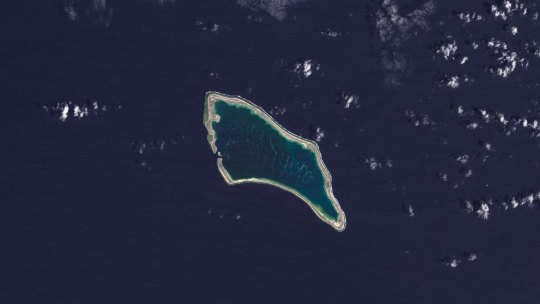
NASA Analysis Shows Irreversible Sea Level Rise for Pacific Islands
Climate change is rapidly reshaping a region of the world that’s home to millions of people.
In the next 30 years, Pacific Island nations such as Tuvalu, Kiribati, and Fiji will experience at least 8 inches (15 centimeters) of sea level rise, according to an analysis by NASA’s sea level change science team. This amount of rise will occur regardless of whether greenhouse gas emissions change in the coming years.
The sea level change team undertook the analysis of this region at the request of several Pacific Island nations, including Tuvalu and Kiribati, and in close coordination with the U.S. Department of State.
In addition to the overall analysis, the agency’s sea level team produced high-resolution maps showing which areas of different Pacific Island nations will be vulnerable to high-tide flooding — otherwise known as nuisance flooding or sunny day flooding — by the 2050s. Released on Sept. 23, the maps outline flooding potential in a range of emissions scenarios, from best-case to business-as-usual to worst-case.
“Sea level will continue to rise for centuries, causing more frequent flooding,” said Nadya Vinogradova Shiffer, who directs ocean physics programs for NASA’s Earth Science Division. “NASA’s new flood tool tells you what the potential increase in flooding frequency and severity look like in the next decades for the coastal communities of the Pacific Island nations.”
Team members, led by researchers at the University of Hawaii and in collaboration with scientists at the University of Colorado and Virginia Tech, started with flood maps of Kiribati, Tuvalu, Fiji, Nauru, and Niue. They plan to build high-resolution maps for other Pacific Island nations in the near future. The maps can assist Pacific Island nations in deciding where to focus mitigation efforts.
“Science and data can help the community of Tuvalu in relaying accurate sea level rise projections,” said Grace Malie, a youth leader from Tuvalu who is involved with the Rising Nations Initiative, a United Nations-supported program led by Pacific Island nations to help preserve their statehood and protect the rights and heritage of populations affected by climate change. “This will also help with early warning systems, which is something that our country is focusing on at the moment.”
Future Flooding
The analysis by the sea level change team also found that the number of high-tide flooding days in an average year will increase by an order of magnitude for nearly all Pacific Island nations by the 2050s. Portions of the NASA team’s analysis were included in a sea level rise report published by the United Nations in August 2024.
Areas of Tuvalu that currently see less than five high-tide flood days a year could average 25 flood days annually by the 2050s. Regions of Kiribati that see fewer than five flood days a year today will experience an average of 65 flood days annually by the 2050s.
“I am living the reality of climate change,” said Malie. “Everyone (in Tuvalu) lives by the coast or along the coastline, so everyone gets heavily affected by this.”
Flooding on island nations can come from the ocean inundating land during storms or during exceptionally high tides, called king tides. But it can also result when saltwater intrudes into underground areas and pushes the water table to the surface. “There are points on the island where we will see seawater bubbling from beneath the surface and heavily flooding the area,” Malie added.
Matter of Location
Sea level rise doesn’t occur uniformly around the world. A combination of global and local conditions, such as the topography of a coastline and how glacial meltwater is distributed in the ocean, affects the amount of rise a particular region will experience.
“We’re always focused on the differences in sea level rise from one region to another, but in the Pacific, the numbers are surprisingly consistent,” said Ben Hamlington, a sea level researcher at NASA’s Jet Propulsion Laboratory in Southern California and the agency’s sea level change science team lead.
The impacts of 8 inches (15 centimeters) of sea level rise will vary from country to country. For instance, some nations could experience nuisance flooding several times a year at their airport, while others might face frequent neighborhood flooding equivalent to being inundated for nearly half the year.
Researchers would like to combine satellite data on ocean levels with ground-based measurements of sea levels at specific points, as well as with better land elevation information. “But there’s a real lack of on-the-ground data in these countries,” said Hamlington. The combination of space-based and ground-based measurements can yield more precise sea level rise projections and improved understanding of the impacts to countries in the Pacific.
“The future of the young people of Tuvalu is already at stake,” said Malie. “Climate change is more than an environmental crisis. It is about justice, survival for nations like Tuvalu, and global responsibility.”
IMAGE: Pacific Island nations such as Kiribati — a low-lying country in the southern Pacific Ocean — are preparing now for a future of higher sea levels. Credit: NASA Earth Observatory
3 notes
·
View notes
Text
Humpback whales make one of the longest migrations of any mammal on the planet. One of the most closely watched routes spans 4,830km (3,000 miles), from Alaska to their breeding grounds in Hawaii. The creatures give birth in sea temperatures between 21C and 28C (70F and 82F), which is ideal for calves who don't have as much blubber as full-grown whales. As the globe's temperature patterns shift, however, scientists are warning that the whales may be forced off course. By the end of this century, rising greenhouse gas emissions will put several breeding grounds across the Earth's hemispheres outside the humpback's temperature tolerance, according to a 2022 study from the University of Hawaii in collaboration with the Pacific Whale Foundation.
Riley Farrell, ‘Too hot for humpbacks: The race to protect Pacific whales’, BBC
2 notes
·
View notes